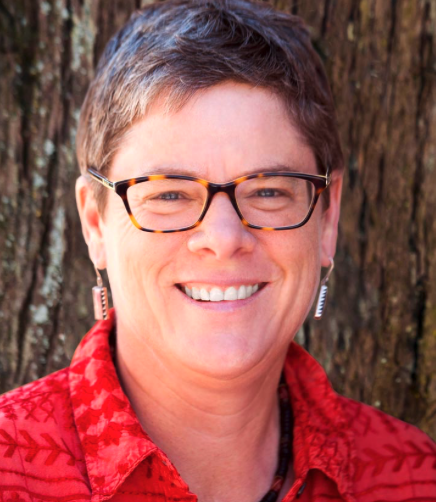Let’s just start with an obvious truth: giving a free talk is a great way to get the word out about your business. You can present at the local library, which may host a series of free talks related to your business. Or a company may invite you in to present at a lunch meeting. Or you may reserve a room in a building and publicize it.
The event arrives and somewhere between a small handful and a large roomful of people show up. You give your talk, people kinda like it. It’s over, and you feel great or at least reasonably good about it.
And no one calls. No one. No clients, no appointments, no customers. Or, okay, maybe one.
Coming Away Empty Handed Is Painful
How many of these talks do you give before you give up? Do you have to learn how to give a better talk, or is there something else going on?
Both may be true. It may help to improve your talk in certain ways. And even if you do that, you’ll still come away empty-handed because of how people buy. Here’s how they buy: slowly.
To make a significant purchasing decision takes people weeks, months, years to arrive at. And yes, it’s a significant purchasing decision to buy from you. Coming to you for a session or a paid class is a big decision.
People in the audience may be interested, even very interested, in what you do. They may be thinking to themselves, “Hmmm, I bet it would be great to work with her.” And then they get shy. Or they worry about how much it’s going to cost. Or they think, “Not quite yet.”
They’re interested, they want to come towards you, but they don’t want to buy. And no matter how many of your business cards and brochures you give away, the phone calls don’t really come in.
A Free Talk is A First Journey Event
Marketing happens in three journeys for your clients. In the First Journey they are wandering around their life with a problem, looking for help. They come across your business, and they need two questions answered: 1. Are you my tribe? and 2. Can you really help me?
If they get reasonable assurance on these two points, they may just enter the Second Journey. The Second Journey is when they are willing to be in a slightly distant but ongoing relationship with your business. They want to know more, they want to be assured you are the real deal. And they are waiting for the right timing.
You’re right: I’m talking about having them on a list.
That’s what’s happening right now between us: you’re receiving this email because you’re in the Second Journey in regards to Heart of Business. You’re getting to know if we’re any good at what we do, and if it matches your values. And if you ever decide to purchase from us, you’re waiting for the right time to do so.
The Third Journey happens after someone pays you money for products or services, and hopefully they’re so wowed by what they receive that they send referrals.
Let me repeat the subhead above: Your free talk is a First Journey event. Although you may serendipitously pick up a client or two or three on occasion, in many cases the people in the audience will need more time.
So instead of hoping, invite them into the Second Journey and onto your list.
Sandwich the Invitation
You may have already tried inviting them with little success–few people signed up for your list. Maybe it was because you didn’t really make a serious invitation.
The usual scenario is someone winds up their talk, and in the last minute or two say, “Hey, if you want to be on my list…”
Of course, by then people are ready to leave. They aren’t going to want to spend more time “getting on a list.” And, besides, what does that really mean?
I encourage you instead to sandwich the invitation. Meaning, give your talk, take a few minutes to make a serious invitation to your list, and then finish up with time for Q&A.
By sandwiching your invitation in the middle, no one is trying to rush out the door. By highlighting it, and giving it the time it deserves, your audience can consider your invitation thoughtfully and make a real decision about being on the list.
Yes, you can feel awkward making the invitation. Here are some pointers.
Keys to the Invitation
- Take the Pressure Off
“Hey, I don’t expect you to want to hire me today, although I do hope you’re intrigued about getting more help with X. What I do want to do is invite you to join my email list/blog subscription, as a way to check out what I’m offering more slowly. Plus, the articles I’ll send you will add to what you’ve learned today. Even if you never hire me, I’m hoping the articles will support you.”
Now, instead of asking them to join a list or do nothing, you’re actually naming the unspoken issue in the room: you’re hoping they are going to hire you. In so doing, you’ve taken that pressure off. It’s a relief, and signing up for your list is a perfectly reasonable alternative that people will jump on now that they don’t have to duck out on the impending sales pitch.
- Walk Them Through the Feedback Form
Yes, I use a feedback form. (You can download the form we use at the end of the article.) And I don’t just hand it out. I pick up a copy, hold it up to the audience, and walk them through the sections.
“Here’s where to fill out your contact information–please write in block letters! It makes reading them so much easier. And here’s where you can sign up for our email list. If you want to be on the list, check this box right here, and make sure we can read your email address. And then below that are two questions and a comment area about this presentation. I’m constantly learning and growing, and I want to make sure this really works for you, so please take a couple of minutes to let me know how all of this landed with you.”
- Stand Silently
Then, I let them fill out the form. I don’t start taking questions, making another point, or tell Sufi jokes. I just stand there, silently. After a few minutes, I collect the forms, and then start the Q&A.
If something is worth doing, it’s worth giving that task time and attention. By taking time for folks to fill out the form, you’ll get quality responses.
Yes, I walk them through it, and then I hand out the forms. Taking this time really highlights each part of the form, and makes the request to join the list very upfront. It’s not a sneaky thing that I slipped onto a feedback form, it’s a straightforward request and offer.
The real trick to making a free talk work is having clarity about what’s next for the audience. Remember that it takes time for people to make significant purchasing decisions. So instead of selling, give real focus and attention to inviting folks onto your Second Journey list. Do that, and I bet you find many of the people in your audience become clients or customers over the weeks, months and years to come.
Here’s one version of the feedback form we use.







17 Responses
Hey Mark,
Excellent article on a very relevant subject for business owners like me.
I appreciate the reminder that free talks are not about converting audience members into clients, it’s about service through the information I provide and about providing familiarity and safety so they can take the next step..if it’s right for their biz.
And i always love the light touch you use. Saying something like, “Hey, I’m glad you thought what I said was helpful how does that relate to what you’re working on in your business” is so much more natural than, “Let’s set up a meeting to talk about my great service!”
Peace,
Judy
I’ll be working on these ideas over the next few months. I’m in the processing of putting my teleseminar together. I already have a physical seminar, so now I have to go and give talks in my community. I’m a little scared, but excited at the same time.
I just started a newsletter, so I’ll encourage that they sign up instead of pushing my services. I’m a big fan of the soft sell, so taking small steps of trust is my kind of way of doing things.
Thanks!
.-= Karl Staib – Work Happy Now´s last blog ..10 Part eCourse to a Happier and More Successful You =-.
Mark,
Great article, and love the feedback form sample! Short and sweet, the way people like it. You’ve reminded me to get back to using the feedback form and I love how you work it into your talk.
I don’t give free talks, because it’s part of what I get paid to do, but I’m just about to start monthly Medicine Song Attunement workshops, by donation, and what you’ve written here would be perfect for those.
Blessings,
Brenda, Medicine Song Woman
Great article Mark and it’s so true. People need a chance to really get to know you before they will plunk down hundreds of dollars a month to be your client.
Offering something free for signing up is also helpful.
The big stumbling block I’ve had over the years is finding good places to speak. Would you care to address the question of where and how to get the speaking gigs in the first place?
Thanks
Susan
.-= Susan Fuller´s last blog ..Welcome to New Niche Finder =-.
@Judy- the light touch is what does it, eh?
@Karl- I’m inspired- and looking forward to hearing how it goes!
@Brenda- Fantastic! And I’m glad the sample form was helpful. I wish you the best with those- woo-hoo!
@Susan- Good point about offering something for free. It does help. Hmm… good places to speak- that would be a good article. Let me put it in the hopper.
I second Susan’s request re good places to speak.
Yes, a great article idea!
Mark
This article was just perfect and timely.
Reading over the 3 journeys put my mind in a good place to think about how to approach possible clients.
I’m an artist and will be exhibiting my work in an event this weekend. Though it’s different than having a speaking event, my goal is to connect with people that stop at my table. I’ll be having a guest/notebook to gather names/info for mailing. Now I’ll have a better idea for what to say. Find that safe and curious conversation.
I’ve put out guest/notebook before with hardly any response.
Finding a conversation to make them feel safe and curious is a big key, I can see.
Thank you
.-= Lisa Guarino´s last blog ..Works in Progress =-.
Mark, love the article. Especially “stand silently”!
How do you coordinate the use of a paper form with a double opt-in system such as aweber?
I see how you can enter the information into aweber yourself, but I don’t believe there is an alternative to their clicking on the aweber link themselves.
Do you explicitly explain this process in your presentation? What percentage of attendees follow through on this opt-in?
Thanks,
Diana
.-= Diana Schneidman´s last blog ..Too much of a good thing can be a challenge =-.
As a past client of yours, I also view your newsletters as a place I am invited to re-engage with you in another way – i.e. a different class, retreat, working privately, etc..
When I read this article, it reminded me of how your advice is both practical and inspirational. I love the idea of sandwiching the feedback form after the presentation and before taking questions. That makes so much sense as it gives your audience some time to digest their experiences.
Great job once again, Mark. Thank you!
.-= Char´s last blog ..test =-.
Mark, you’re exactly right…. The newsletter sign-up is a perfect bridge between a client showing interest and taking action. Thanks for clarifying the issue, and for once again putting your very relate-able spin on it.
@Lisa- Ahh, the guest book- yes, it looks like that would work here, too. You’re welcome.
@Diana- It’s a great question. To tell you the truth, we don’t have statistics, but if it’s done quickly afterwards, and you warn people that they will need to click to confirm, it tends to be pretty darn good.
Also, because you have their email, you can also send them a personalized email telling them about the confirmation email.
@Char- It’s great to see you here, and yes, it works like that, eh?
@Beth- woo-hoo- glad it made sense to you. Gotta love it.
This is great, Mark. I was already seeing talks as part of the First Journey and what you added here for me was:
– the ‘talk them through the form’ bit – I’m realising more and more that people feel so much safer with super-clear fool-proof instructions (me included!)
– naming the elephant in the room and explicitly saying “I’m not expecting you to hire me now” – I can almost hear audiences taking a deep sigh of relief that the pressure/obligation has been taken away!
I’ve found talks to be one of the best ways of meeting prospective clients and the more I do it, the less nervous I get & the more I enjoy it.
I’ll add those two elements in next time I talk, thank you.
.-= Corrina Gordon-Barnes’s lastest post: It
Fantastic, Corrina- I’ve found they make a big difference for me- I want to hear how it goes for you, too.
thank you – this helps.
thank you this post.
This was great. Super practical. I love the straightforward and clear request put out in a way that takes off the pressure. Who knew you could do both? 🙂
Who knew? 🙂 Glad it was helpful, Norah!